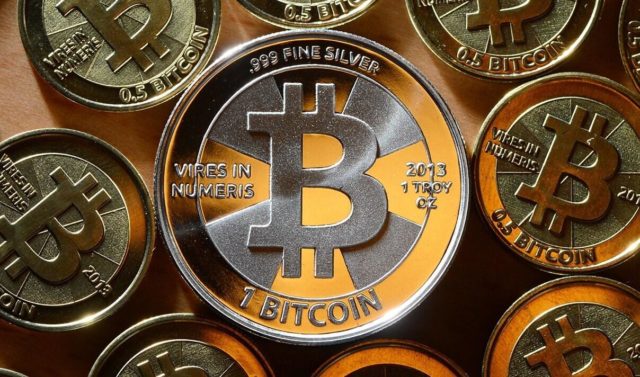- The Indian Rupee attracts some buyers despite the firmness of the US Dollar.
- India's GDP figure will grow 7.3% in the current fiscal year (2023-24), faster than the 7.2% growth in 2022-23.
- The US Consumer Price Index (CPI) for December will focus investors' attention ahead of Indian industrial production data.
The Indian Rupee (INR) starts the new week on a positive note on Monday. Foreign capital inflows and intervention by the Reserve Bank of India (RBI) have been supporting the INR from any major depreciation. On Friday, the government revealed the first advance estimates of India's GDP. It reported that India's Gross Domestic Product (GDP) will expand by 7.3% in the current fiscal year (2023-24), which is slightly faster than the 7.2% growth in 2022-23.
Furthermore, the United Nations (UN) reported in the report that India's economic growth will decline marginally to 6.2% in the current year from the projected 6.3% expansion recorded in 2023, but will maintain its position as the world's leading economy. fastest growing major in the world.
Investors will closely monitor the US Consumer Price Index (CPI) for December, which is due to be released on Thursday. The headline CPI is estimated to increase by 3.2% year-on-year, while the core CPI will decline from 4.0% to 3.8% year-on-year. India's industrial production and manufacturing output for the month of November will be released on Friday.
Daily Market Summary: Indian Rupee Remains Strong Despite Strong USD
- S&P Global Services PMI for India for December stood at 59.0 versus 56.9 previously, above the consensus of 56.5.
- India's foreign exchange reserves rose by $2.759 billion to $623.2 billion in the week ended December 29, the Reserve Bank of India said on Friday.
- US Nonfarm Payrolls (NFP) rose 216,000 in December from the previous reading of 173,000, above the 170,000 expected. The US unemployment rate remained at 3.7%.
- Average hourly earnings rose 0.4% for the month, better than the 0.3% expected, while the annual figure stood at 4.1 year-on-year in December versus 4.0% in the previous reading, above the consensus of 3.9%.
- According to the CME's Fedwatch tool, Fed funds futures markets have priced in a 65% chance that the Fed will cut rates in March.
Technical Analysis: Indian Rupee maintains long-term range unchanged
The Indian rupee is trading higher. The USD/INR pair has remained confined to a trading range of 82.80-83.40 since September. Technically, the pair's bullish outlook looks vulnerable as the pair will cross below the 100 EMA on the daily chart. Furthermore, the 14-day Relative Strength Index (RSI) is below the midpoint of 50, supporting that a further decline cannot be ruled out.
A decisive break below the psychological support level of 83.00 will pave the way towards 82.80, which represents the confluence of the lower limit of the operating range and the September 12 low. The next support level lies at the August 11 low at 82.60. To the upside, the upper limit of the range at 83.40 acts as immediate resistance level for USD/INR. Buying above 83.40 will lead to a recovery to the 2023 high at 83.47, en route to the psychological level of 84.00.
Indian Rupee FAQ
What are the key factors driving the Indian Rupee?
The Indian Rupee (INR) is one of the currencies most sensitive to external factors. The price of crude oil (the country relies heavily on imported oil), the value of the US Dollar (most trade is done in US dollars), and the level of foreign investment are all influential factors. The Reserve Bank of India's (RBI) direct intervention in the foreign exchange markets to keep the exchange rate stable as well as the level of interest rates set by the RBI are other important factors influencing the Rupee. .
How do the decisions of the Reserve Bank of India affect the Indian Rupee?
The Reserve Bank of India (RBI) actively intervenes in foreign exchange markets to maintain a stable exchange rate and help facilitate trade. Furthermore, the RBI tries to keep the inflation rate at its target of 4% by adjusting interest rates. Higher interest rates tend to strengthen the Rupee. This is due to the role of the “carry trade”, in which investors borrow in countries with lower interest rates to park their money in countries that offer relatively higher interest rates and profit from the difference.
What macroeconomic factors influence the value of the Indian Rupee?
Macroeconomic factors that influence the value of the Rupee include inflation, interest rates, economic growth rate (GDP), trade balance and foreign investment inflows. A higher growth rate can lead to more investment abroad, increasing demand for the Rupee. A less negative trade balance will eventually lead to a stronger Rupee. Higher interest rates, especially real rates (interest rates minus inflation) are also positive for the Rupee. A risk environment can lead to higher inflows of foreign direct and indirect investment (FDI and FII), which also benefit the Rupee.
How does inflation affect the Indian Rupee?
Higher inflation, particularly if it is comparatively higher than other countries, is generally negative for the currency as it reflects a devaluation through excess supply. Inflation also increases the cost of exports, leading to more rupees being sold to buy foreign imports, which is negative for the Indian Rupee. At the same time, higher inflation usually leads the Reserve Bank of India (RBI) to raise interest rates and this can be positive for the Rupee, due to increased demand from international investors. The opposite effect applies to lower inflation.
Source: Fx Street
I am Joshua Winder, a senior-level journalist and editor at World Stock Market. I specialize in covering news related to the stock market and economic trends. With more than 8 years of experience in this field, I have become an expert in financial reporting.







